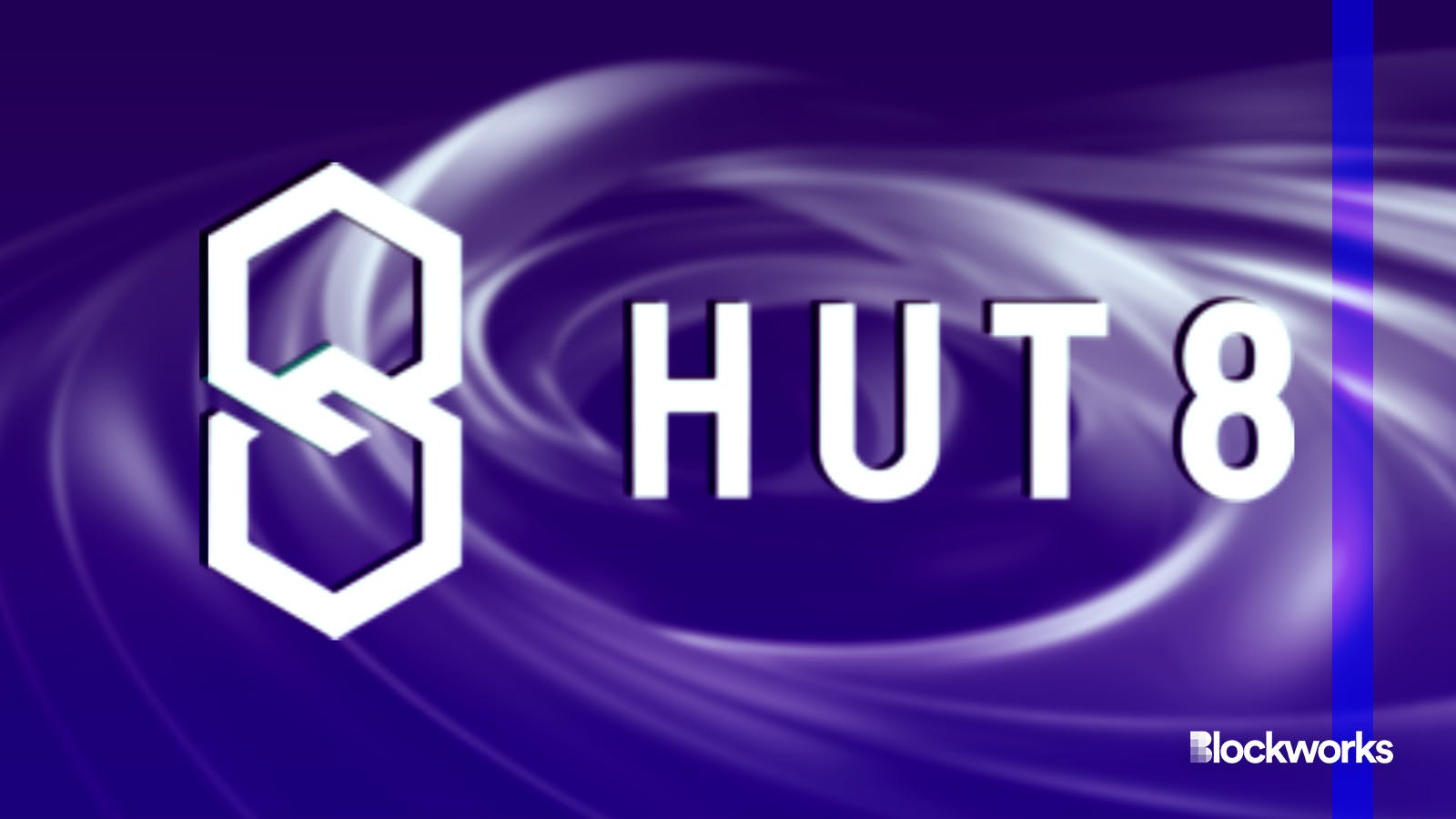Hut 8 eyes growth around the Bitcoin halving — but not at all costs
A few months after Hut 8’s merge with US Bitcoin Corp, the combined company’s new chief executive says building back shareholder trust is a key focus

Hut 8 and Adobe Stock modified by Blockworks
A few months after the merger between crypto miner Hut 8 and US Bitcoin Corp, the combined company’s new CEO says building back shareholder trust remains a challenge.
Leading up to, and following, the next Bitcoin halving slated for next month, the company’s focuses include growth — “but not growth at all costs,” Hut 8 CEO Asher Genoot told Blockworks.
Genoot, a co-founder and former chief operating officer at US Bitcoin Corp, replaced Jaime Leverton as the miner’s CEO just weeks after the deal closed. The switch was made in an effort to help the company move in “a new strategic direction,” according to Hut 8’s board of directors.
In Genoot’s first few weeks as CEO, the company closed its deal to buy four power generation facilities and broke ground on a 63 megawatt (MW) mining site in Texas. Hut 8 also noted at the time that it would use its bitcoin reserves to finance growth initiatives.
Less than two weeks later, Hut 8 said it would cease mining operations at its Drumheller site in Alberta, Canada as part of a broader effort to nix inefficiencies. High energy costs and voltage issues at the facility had hurt its profitability.
Read more: Miners continue money-conscious moves ahead of the Bitcoin halving
Genoot said Drumheller’s closure is just “one of many examples” of how the company intends to scale the business going forward.
“I’m going through not just every single facility, every single category of miners and every single business line, but also every single cost center,” he said. “I’m building bottom-up analyses where are we spending money, how are we spending money and what’s the return on that investment spend?”
Hut 8’s stock price was down 24.5% from a month ago, as of market close Wednesday. The company’s market capitalization was roughly $690 million at that time — not much higher than the roughly $650 million worth of BTC it holds on its balance sheet.
Read more: Why most bitcoin mining stocks are down amid a persistent crypto rally
Genoot has been candid in noting the reasoning behind Hut 8’s merge with US Bitcoin Corp. While Hut 8 had a strong balance sheet, he has said, it was weak on operations — a category US Bitcoin Corp was equipped to help fix.
“So [Hut 8’s] biggest weakness is overcoming that public sentiment and building that trust back with our shareholder base and with the market,” he said. “It’s making a lot of these tough decisions in Q1 and then showing the fruits of that labor in Q2, and the execution of that.”
Growth strategy, M&A around the halving
The next bitcoin halving — an event during which the per-block rewards for bitcoin miners is set to decrease from 6.25 BTC to 3.125 BTC — is slated for late April.
Occurring roughly every four years, the halving is expected to put financial stress on sector companies. Smaller private operations and miners in areas with higher power costs are particularly at risk of ceasing operations, segment observers have said.
Read more: Bitcoin miner consolidation appears imminent as halving looms
But bitcoin’s price ascent in recent weeks means the halving might not be “as pronounced” as it could have been, Genoot argued.
BTC’s recent all-time highs have pushed up hash price — a metric that measures how much a miner can expect to earn from a specific quantity of hash rate. This might “bail out” miners that might have otherwise shuttered post-halving, the Hut 8 CEO added.
Still, Genoot said he expects there will still be attractive buying options for the company.
“It gives us a real opportunity to invest in things that come up and really be able to grow,” he said. “My belief is growth is extremely important, but not growth at all costs.”
He added: “Capital is going to flow toward the most efficient operators that return the best capital, and scale matters in that pursuit as well.”
Some of Hut 8’s biggest rivals in the space have laid out aggressive growth targets for its self-mining fleet.
Marathon executives said the company was ready to use the roughly $1 billion of “dry powder” on its balance sheet in a bid to double its hash rate to about 50 exahashes per second (EH/s) by the end of 2025. Riot Platforms also has big hash rate growth plans to reach 100 EH/s over the long term via a deal with MicroBT.
Though Hut 8 trails those competitors in terms of deployed self-mining hash rate — with 7.2 EH/s at the end of February — the company has achieved scale in a different way, with 926 MW of energy capacity under management, Genoot noted.
The decision to build scale or buy scale will depend, the CEO noted.
Hut 8’s 63 MW build-out in Texas is expected to cost $275,000 per megawatt, the company said. That is roughly 40% less than the roughly $460,000 per megawatt that Marathon spent on two mining facilities in December.
“We’re very active in the M&A markets, but we’re also very cost-conscious,” Genoot said. “We’re not going to overpay because we know what the cost is to develop ourselves as well, so we’re running both in parallel very aggressively.”
Get the news in your inbox. Explore Blockworks newsletters:
- The Breakdown: Decoding crypto and the markets. Daily.
- 0xResearch: Alpha in your inbox. Think like an analyst.






